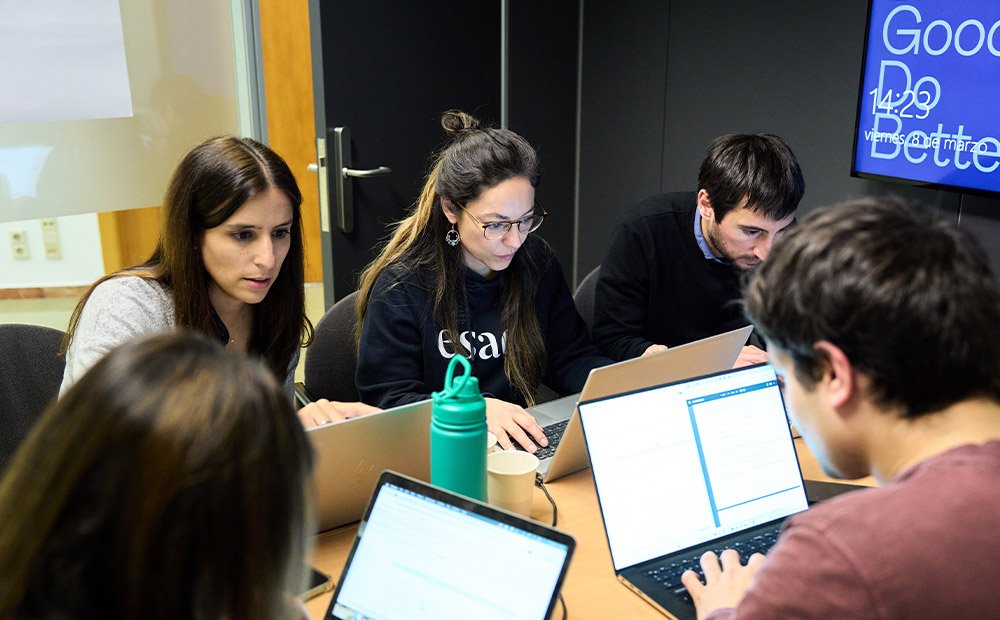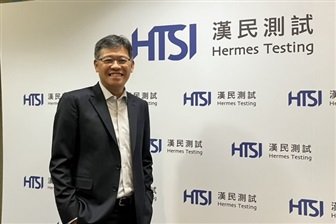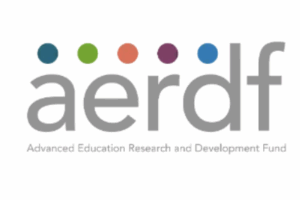Business
The Future of AI in Business

We are experiencing a new global technological revolution around the use and applications of Artificial Intelligence (AI). But what is the future of AI? In recent months, companies and professionals have taken their first steps in its adoption — and experts say in the imminent future AI will become a transformative force, reshaping business strategies and operations around the world.
“If 2024 was the year of AI’s adoption, 2025 will be the year of its transformation. From the redefinition of automation to the healthcare revolution, AI continues to make great leaps across industries.”*
In this article, we will analyze the impact, challenges and opportunities that the era of AI opens up for the future of companies and their managers. We will also look at the training programs that will successfully help us lead the way in the use of AI, and the AI trends for 2025.
What does the future of AI mean for business?
The future of AI is marked by advances that go beyond basic automation. AI’s ability to interpret data in real time, learn from it and act autonomously is reshaping business models.
Leading companies such as Inditex, Zalando and Amazon are already using the technology to anticipate trends, personalize customer experiences and optimize supply chains.
These AI trends show that the use of tools such as deep learning algorithms and generative AI systems can redefine entire industries, from manufacturing to financial services.
The age of AI and the role of business leaders
In the age of AI, the role of business leaders transcends data-driven decision-making. They must become architects of an ethical and strategic vision, capable of integrating AI into organizational culture so that it benefits both the company and society.
On the other hand, as we pointed out in our article on the characteristics of a good leader, it will also be essential for the manager to be able to communicate effectively, empower teams in the domain of AI and create trust around the use of these tools.
Ultimately, guiding teams in a rapidly evolving technology environment requires the skills to communicate, inspire and manage the transformative potential of AI. In this context, the ability to form and lead multidisciplinary teams will be crucial to create a sustainable positive impact.
Transforming the corporate environment for the future of AI
To thrive in the use of AI in the future, businesses must evolve. This includes a comprehensive review of technological infrastructures, prioritizing systems that can handle large volumes of data and ensuring integration between areas.
It is critical that this transformation of the corporate environment for the future of AI addresses three vital points: specialized leadership, team readiness and responsible AI strategies.
#1 Leadership in the age of AI
Business leaders will play a crucial role in establishing a clear vision of how AI will be used in the company. To this end, it is essential to have technical, strategic and human knowledge and skills, including:
- Technical understanding of AI: Mastering basic concepts such as machine learning and algorithm ethics.
- Data-driven decision-making: Knowing how to interpret results to drive strategic decisions.
- Adaptive leadership skills: Managing technological change by fostering collaboration and resilience.
- AI ethics and accountability training: Addressing bias and privacy is a must.
- Access to networks of experts: Developers, opinion leaders, engineers, specialized media and more.
Business schools like Esade offer training programs specifically designed to equip leaders with these tools and knowledge. Programs such as Rethinking Business with AI, Artificial Intelligence in Business and the Specialization Program in Business Artificial Intelligence (all taught in Spanish) offer first-class training in AI and are taught in collaboration with experts from companies including IBM.
Additionally, undergraduate degree programs such as the Bachelor of Business Administration & Bachelor in Business and Artificial Intelligence and postgrad programs such as the Master in Business Analytics and Artificial Intelligence are innovative educational approaches that will enable new generations of leaders to embrace AI as early as their university years.
#2 Preparing teams for the shift to AI
The preparation of human talent will be key in the era of AI and the future of business. Teams trained in areas such as data analysis, machine learning and technological change management will be critical to integrating AI effectively. Not only will this boost productivity, but it will also help reduce barriers to technology adoption.
#3 Strategies for a responsible transition to the age of AI
To achieve a successful and responsible transition, the following strategies are advisable:
- Promote the ethical use of AI: Implement ethical principles and training programs to prevent bias and ensure a positive impact.
- Establish algorithm monitoring and auditing policies: Creating regular audit protocols that assess the accuracy, fairness, and transparency of algorithms is critical. This includes, but is not limited to, using automated tools to identify biases, such as IBM’s AI Fairness 360, and testing in simulated scenarios prior to deployment.
- Ensure that the human and social impact of technology is positive: Companies must assess the social impact of technology and reinforce its acceptance through responsible initiatives — such as regularly auditing the models used in recruitment — to ensure they don’t perpetuate discrimination.
Consequences and challenges of AI in companies
While the benefits are numerous, the consequences of AI also pose significant ethical challenges that companies must address proactively. These include risks such as privacy, security and job displacement. A strong strategy will minimize the consequences of AI on companies that prioritize ethics.
#1 AI and privacy
Mass data collection by AI systems can put the privacy of users at risk and, without proper control, can result in unethical surveillance. Businesses must comply with regulations such as the GDPR General Data Protection Regulation to ensure transparency.
#2 Security Risks
Cybersecurity will be a key challenge in the future of AI, with systems vulnerable to attack. Investing in robust protection is crucial for businesses.
#3 Erroneous decision-making
Biases in algorithms or errors in data could lead to incorrect business decisions. Monitoring and auditing systems will be essential to ensure sound decision-making and the implementation of successful strategies
#4 Job displacement
Automation can threaten repetitive jobs: a McKinsey study reveals that between 25 and 35% of work activities could change in the next decade, especially repetitive tasks. This will exacerbate inequalities if the transition is not managed with reskilling policies.
Present and future: what AI is already being used in companies?
Among the main AI tools that are currently being used – and will continue to grow exponentially – are:
- ChatGPT, Copilot, Gemini: Generative AI tools like these are used to generate texts, content, images and even write programming code, among other uses. According to McKinsey’s 2024 global survey on AI, 65% of respondents reported that their organizations regularly use generative AI — almost double the number in the previous survey.
- Chatbots and virtual assistants: Automated response tools streamline and improve customer service. It is estimated that in 2025 chatbots will handle 70% of customer interactions, improving the experience and introducing efficiencies.
- Recommendation systems (AI in e-commerce): Platforms such as Amazon and Netflix have perfected AI algorithms to suggest products or content based on user behavior.
- RPA (Robotic Process Automation): Companies like UiPath and Automation Anywhere are leading the way in automating repetitive tasks in areas such as finance, human resources, and logistics.
- Predictive analytics: Companies in sectors such as retail or manufacturing use AI to analyze large volumes of data to anticipate demand and prevent supply disruptions.
- AI systems in cybersecurity: Tools such as Darktrace and CrowdStrike employ advanced algorithms to detect and mitigate threats in real-time.
What does AI look like in 2025?
If you’re wondering what AI will look like in 2025 and future years, the key will be its ability to integrate into everyday business processes. From advanced technologies such as digital twins or agents to generative intelligence, AI will optimize processes and personalize experiences in ways never before seen. Success will depend on combining these tools with ethical leadership and strategic vision.
“According to consulting firms MacKinsey, Gartner and Forrester, AI agents will become one of the top emerging technology applications by 2025.”*
10 trends in the use of AI in companies for 2025
- AI agents: Autonomous systems capable of managing complex tasks, streamlining operations and improving the customer experience. Google has based its new Gemini 2.0 AI model on ‘agents’, confirming that the future of this technology is independence and process automation.
- Advanced generative AI: Models such as DALL-E will be common in creative industries and advertising.
- Digital twins: Technologies that simulate processes or systems to optimize operations, widely used by large corporations such as Tesla, Siemens and General Electric.
- Specialized AI systems: Tools for medical diagnoses or automated legal solutions.
- Edge AI: AI processed on local devices that do not need to connect to a data center to function. This allows the devices to make autonomous decisions — very useful in medical or automotive settings.
- Ethical data analytics platforms: Technologies that ensure ethical compliance with AI.
- Hyper-personalization: AI will allow detailed personalization in sectors such as retail, health and finance, deepening customer engagement and loyalty.
- Intelligent automation: Integration into business processes for operational efficiency and decision-making.
- Human-AI synergy: Enhanced human capabilities and improved decision-making processes in companies.
- Advanced data analytics: Investment into AI will see data analytics grow significantly, with the global market reaching $234.6 billion.
Sectors that will lead the adoption of AI in 2025
1. Banking and finance
Financial institutions are using AI to detect fraud, personalize service offerings and improve customer service through chatbots. Tools such as predictive analytics also optimize investments and manage risks accurately.
2. Health
AI is revolutionizing medical diagnostics by using algorithms that analyze images such as X-rays and MRIs quickly and accurately. It’s also being used in drug research and personalized treatment planning.
3. E-commerce and retail
AI-based recommendation systems help personalize the customer experience. In addition, predictive analytics tools optimize inventory management and logistics in the supply chain.
4. Manufacturing
The adoption of digital twins and robotic automation is optimizing production. This reduces errors and costs, while allowing factories to operate with greater efficiency and flexibility.
5. Energy and sustainability
AI is helping energy companies optimize energy consumption and generation, especially in renewables. It is also used to analyze climate data and improve operational efficiency in sustainable projects.
6. Transport and logistics
Autonomous vehicles, intelligent traffic management systems and route optimization are clear examples of AI’s impact on this sector.
7. Education
Personalized learning platforms and AI-powered virtual tutors are transforming the way students interact with educational content — increasing the accessibility and adaptability of learning.
“Is your company ready to lead this change? Request more information on how to lead the AI revolution with Esade”.*
* Sarah Chudleigh, content writer at the specialized platform Botpress.
Business
Apple’s AI-Powered Siri Poised to Shake Up Search—What Small Businesses Should Know – Times Square Chronicles
Business
Trump asks US Supreme Court to uphold his tariffs after lower court defeat

President Donald Trump has asked the US Supreme Court to overturn a lower court decision that found many of his sweeping tariffs were illegal.
In a petition filed late on Wednesday, the administration asked the justices to quickly intervene to rule that the president has the power to impose such import taxes on foreign nations.
A divided US Court of Appeals for the Federal Circuit last week ruled 7-4 that the tariffs Trump brought in through an emergency economic powers act did not fall within the president’s mandate and that setting levies was “a core Congressional power”.
The case could upend Trump’s economic and foreign policy agenda and force the US to refund billions in tariffs.
Trump had justified the tariffs under the International Emergency Economic Powers Act (IEEPA), which gives the president the power to act against “unusual and extraordinary” threats.
In April, Trump declared an economic emergency, arguing that a trade imbalance had undermined domestic manufacturing and was harmful to national security.
While the appellate court ruled against the president, it postponed its decision from taking effect, allowing the Trump administration time to file an appeal.
In Wednesday’s night’s filing, Solicitor General John Sauer wrote that the lower court’s “erroneous decision has disrupted highly impactful, sensitive, ongoing diplomatic trade negotiations, and cast a pall of legal uncertainty over the President’s efforts to protect our country by preventing an unprecedented economic and foreign policy crisis”.
If the Supreme Court justices deny the review, the ruling could take effect on 14 October.
In May, the New York-based Court of International Trade declared the tariffs were unlawful. That decision was also put on hold during the appeal process.
The rulings came in response to lawsuits filed by small businesses and a coalition of US states opposing the tariffs.
In April, Trump signed executive orders imposing a baseline 10% tariff as well as “reciprocal” tariffs intended to correct trade imbalances on more than 90 countries.
In addition to those tariffs, the appellate court ruling also strikes down levies on Canada, Mexico and China, which Trump argues are necessary to stop the importation of drugs.
The decision does not apply to some other US duties, like those imposed on steel and aluminium, which were brought in under a different presidential authority.
Business
Hermes Testing expands probe solution business amid AI-driven semiconductor demand

Hermes Testing, a testing solutions provider under Hermes Epitek, is leveraging its machine engineering services and customized equipment manufacturing to address growing demand in advanced semiconductor testing driven by AI industry growth. The company…
-

 Business6 days ago
Business6 days agoThe Guardian view on Trump and the Fed: independence is no substitute for accountability | Editorial
-
Tools & Platforms3 weeks ago
Building Trust in Military AI Starts with Opening the Black Box – War on the Rocks
-

 Ethics & Policy1 month ago
Ethics & Policy1 month agoSDAIA Supports Saudi Arabia’s Leadership in Shaping Global AI Ethics, Policy, and Research – وكالة الأنباء السعودية
-

 Events & Conferences4 months ago
Events & Conferences4 months agoJourney to 1000 models: Scaling Instagram’s recommendation system
-

 Jobs & Careers2 months ago
Jobs & Careers2 months agoMumbai-based Perplexity Alternative Has 60k+ Users Without Funding
-

 Education2 months ago
Education2 months agoVEX Robotics launches AI-powered classroom robotics system
-

 Funding & Business2 months ago
Funding & Business2 months agoKayak and Expedia race to build AI travel agents that turn social posts into itineraries
-

 Podcasts & Talks2 months ago
Podcasts & Talks2 months agoHappy 4th of July! 🎆 Made with Veo 3 in Gemini
-

 Podcasts & Talks2 months ago
Podcasts & Talks2 months agoOpenAI 🤝 @teamganassi
-

 Education2 months ago
Education2 months agoAERDF highlights the latest PreK-12 discoveries and inventions


